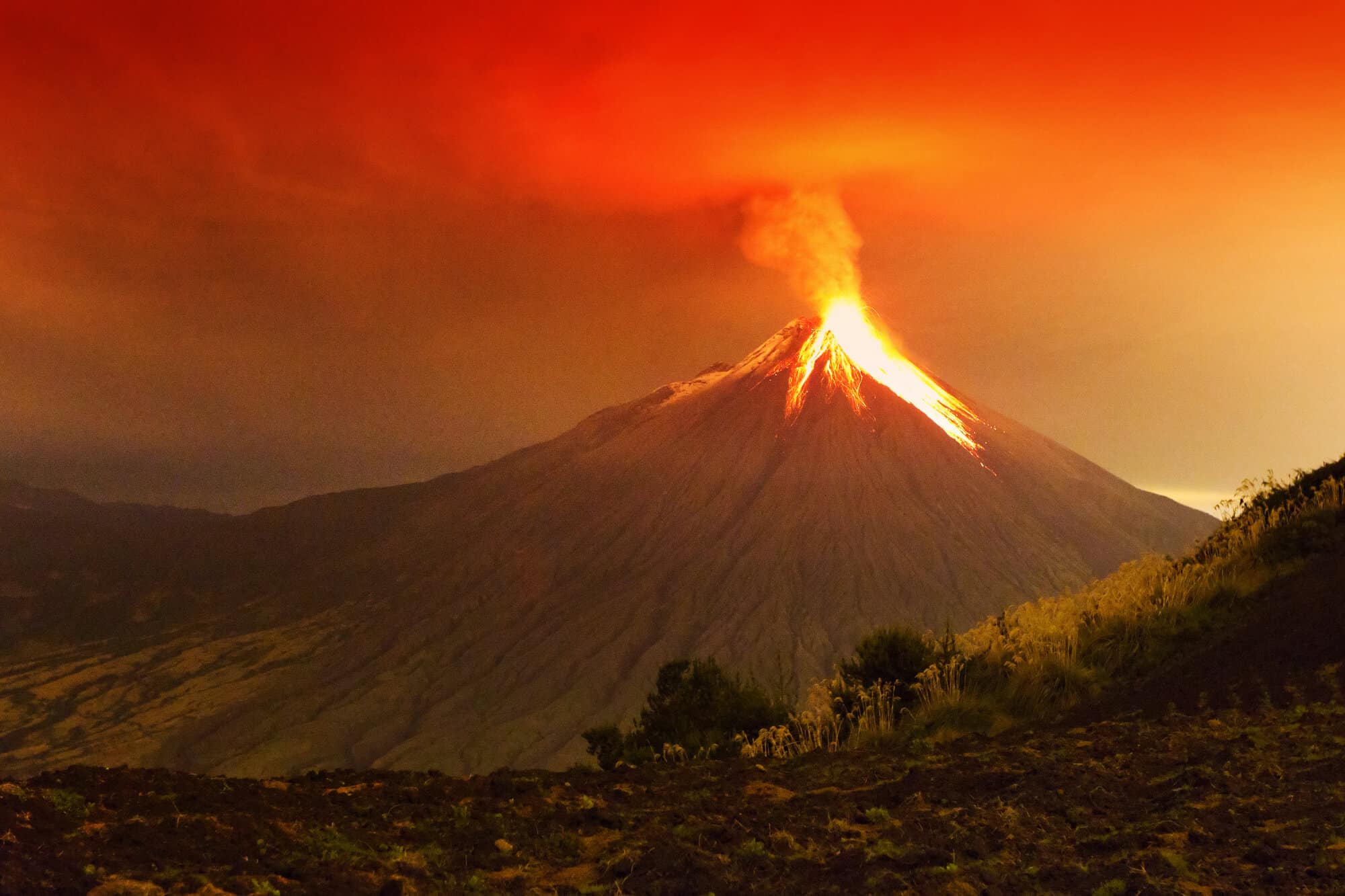Using computer simulations of volcanic eruptions over the past thousand years and theories that analyze the global energy balance, a new study locates and analyzes the connection between volcanic eruptions and various climate changes

In an article published in the scientific journal Journal of climate, researchers Moran Erez and Dr. Uri Adam from the Institute of Earth Sciences of the Hebrew University of Jerusalem examine the The time-dependent impact of volcanic eruptions on the tropical rainforest, which contains about half of the world's population. Contrary to previous studies, a unique response was discovered in the different parts of the atmosphere and in the oceans: each is linked In a different way to climatic processes and therefore the response to volcanic eruptions leads to a spectrum of different phenomena, which the article tries to explain.
The main cause of climate change following volcanic eruptions is the release of volcanic ash into the atmosphere. The ash particles absorb the sun's rays and therefore heat the atmosphere but cool the ground. On average, the blocking of the sun's rays following the release of volcanic ash leads to global cooling, and especially to excess cooling of the hemisphere where the eruption occurred. It is known that extensive and diverse climate changes accompany volcanic eruptions. These include a decrease in global rainfall, a significant increase in global ice cover, a shift in the tropical rain band, weakening monsoons, El Niño events about one year after eruptions, and La Niña events about three years after eruptions.
A series of volcanic eruptions at the beginning of the 19th century led to a decrease of approximately one degree in the global temperature due to the volcanic air pollution, so much so that 1816 was crowned as the "year without a summer". Massive agricultural damage due to floods, cold waves, and reduced sunlight led to worldwide famine. A similar series of volcanic eruptions led to the "Little Ice Age" in the northern half of the country between the 15th and 18th centuries.
The global cooling that accompanies volcanic eruptions, as a result of the reduction of sunlight, is an inspiration for future "climate engineering" solutions in a warming climate, and therefore arouses extensive research interest in the processes associated with these powerful events. The present study is based on the analysis of the reconstruction of climate changes in the last thousand years by a climate model of the American National Center for Atmospheric Research (National Center for Atmospheric Research Community Earth System Model). The data of the volcanic eruptions themselves (timing, intensity and the way the ash is distributed between the hemispheres) are based on the study of ice cores from Greenland and Antarctica that were carried out by previous studies.
The study explains various climatic phenomena by using the global energy balance. It does this by examining the relationship between energy fluxes in the atmosphere and oceans and time-dependent feedbacks Such as those linking the global ice cover and the global temperature, land winds and sea currents, and the concentration of volcanic ash and the flow regime in the atmosphere. The use of a uniform theoretical framework based on energy balances enables an understanding and description of the method in which these feedbacks dictate the development of the various climatic phenomena. In addition, the researchers discovered preliminary signs of various phenomena in the energy balance. In particular, they show that monitoring the energy balance in the atmosphere, by using satellite data, allows the prediction of the tropical response to volcanic eruptions about six weeks in advance. This finding could form a basis for future applications of preparing for the effects of volcanic eruptions.
More of the topic in Hayadan:
- Thanks to the small volcanoes / David Bailo
- Could it be that volcanoes provided the sparks for the first life?
- Survey: Israelis underestimate the risk of the climate crisis
- 50 years ago, humans took the first full picture of the Earth from space - the climate crisis means it's time to take another picture from the same angle
- State Comptroller: Israel's progress in dealing with the climate crisis - negative to zero
